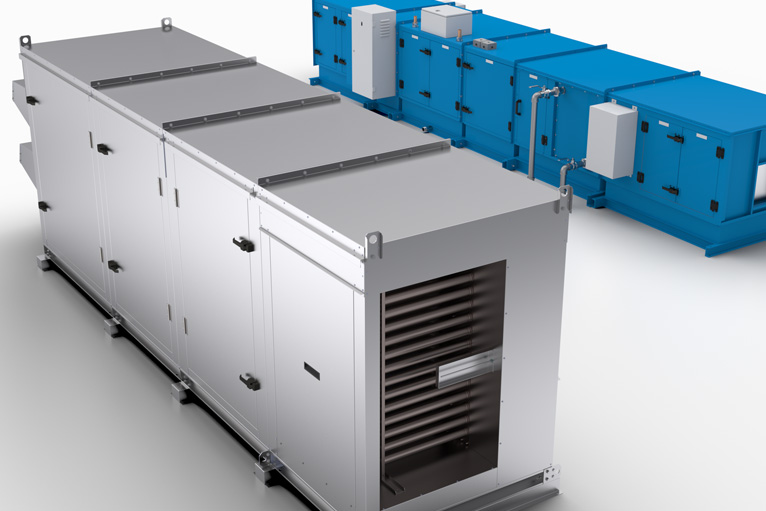With the energy intensity of commercial kitchens, there are some significant opportunities to recover waste heat, save energy and reduce your carbon footprint.
The most obvious area to recover heat is the kitchen exhaust hood. The typical temperature coming off the exhaust collar is approximately 100⁰ F. Recapturing that heat has its challenges since the exhaust air is laden with effluent from the cooking process. Left untreated, it would clog a heat recovery coil in short order. To prevent or minimize coil fouling and make the economic and environmental case for heat reclaim requires additional equipment.
First, let’s describe the typical heat reclaim system. In any design, recovering the heat requires a reciprocal heat reclaim system to offload and use the captured heat, and this is achieved by what is commonly referred to as glycol run-around loop. A heat reclaim coil is installed in the exhaust air path, and the “loop” has glycol flowing through it. Glycol is used to prevent freezing of the fluid in colder climates. As heated air passes over the coil, the glycol warms and is pumped in a continuous loop to another coil. The coil is typically housed in a make-up air unit and installed in the path of the incoming outside air. The outside air temperature is raised (the temperature increase is a function of the outside air temperature and the recovered heat), effectively preheating the makeup air with free energy before the heating unit (direct gas, indirect gas, electric and alike.) Another option is to preheat hot water so that less energy is used to bring the water to temperature. In the case of hot water, storage has to be considered.
To mitigate the coil fouling, HRU coils are installed in pollution control units that filter the air before it travels to the HRU coil. Refer to the articles at kitchenventilation.com that cover this subject. The pollution control unit is mated with a make-up air unit with a complementary coil, and these units have a filter on the fresh air intake in front of the coil.

Systems can be designed to provide a sensible energy recovery ratio as high as 40% for design conditions. The manufacturer can calculate the sensible energy recovery ratio of the system.
Manufacturers producing these systems can estimate an ROI for the system. As a rule of thumb, the lower the design temperature the greater the opportunity for a quick payback. Northern border states and Canada are prime markets for these systems.
The international mechanical code allows for heat reclaim systems in commercial kitchen exhaust. HRUs can be confused with Energy Recovery Systems. The requirement is that the HRUs only recover sensible heat utilizing a coil.
Commercial dishwasher manufacturers also utilize heat recovery devices within their washers to reclaim waste heat and reduce sensible and latent loads to the space. Refer to commercial dishwasher manufacturers’ technical data for more information. In this type of system, there is no complementary coil.
With energy prices continuing to rise, the opportunity to recapture already paid-for heat will grow in importance.
Should you require help in selecting a system with Heat Recovery, the experts that manufacture these types of units can guide you on the proper selection needed to meet your requirements.

Read another article relating to Pollution Control Units – What is the difference between commercial kitchen pollution control units?
Subscribe to kitchenventilation.com
Stay up to date by subscribing to Halton’s Commercial Kitchen Ventilation Blogs by entering your email address to subscribe and Halton will provide you with the latest information on commercial kitchen exhaust hoods, pollution control units, air handling, and safety systems. You will receive notifications of new posts by email.

